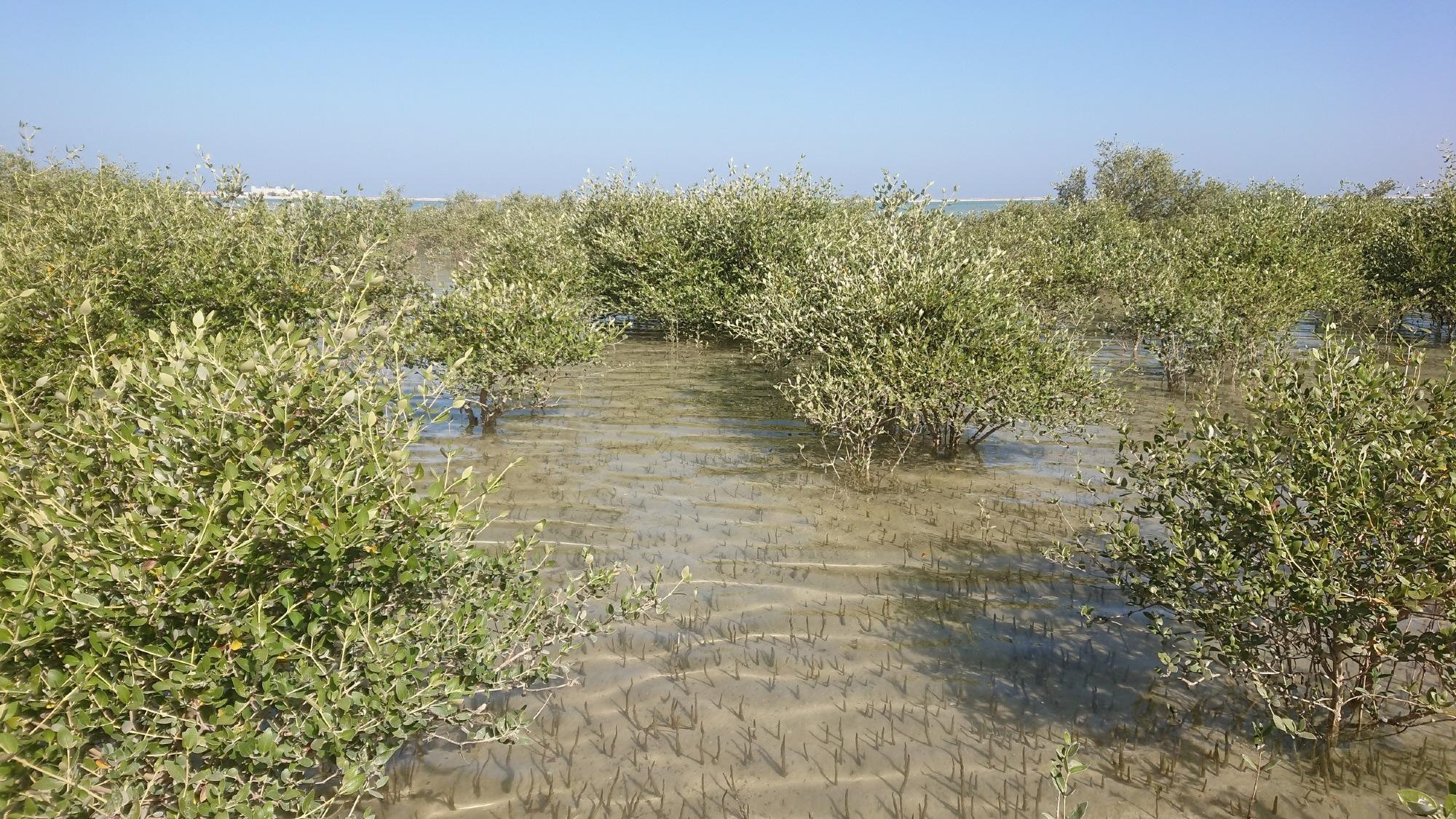Jan 6 2021
Nearly 6,000 years ago, the majority of the mangrove forests on Oman’s coasts vanished completely. But the reason behind this disappearance was not completely clear, until now.
 6,000 years ago, mangroves were widespread in Oman. Today, only one particularly robust mangrove species remains there and this is found in just a few locations. Image Credit: © Valeska Decker/University of Bonn.
6,000 years ago, mangroves were widespread in Oman. Today, only one particularly robust mangrove species remains there and this is found in just a few locations. Image Credit: © Valeska Decker/University of Bonn.
The University of Bonn has recently performed a study that sheds new light on this phenomenon—it indicates that climatic changes account for the collapse of coastal ecosystems suggesting that overuse by humans and depleting sea levels are not likely to be the reason.
The pace at which the mangroves became extinct was quite significant: a majority of the stocks were permanently lost within a few years. The study results have been published in the Quaternary Research journal.
Mangroves are essentially trees that occupy a highly unique ecological niche—these trees grow in the supposed tidal range, that is, coastal regions that are dry at low tide and underwater at high tide.
Mangrove trees prefer a warm climate; a majority of these species do not withstand sea surface temperatures below 75 °F (24 °C). These can withstand salt, but only up to a tolerance threshold that differs from one species to another.
This is why we find them nowadays mostly in regions where enough rain falls to reduce salinization of the soil.
Valeska Decker, Study Lead Author, Institute for Geosciences, University of Bonn
Scientists have discovered fossils that demonstrate that several mangrove lagoons had previously existed on the coast of Oman. But about 6,000 years ago, the lagoons had suddenly disappeared on a massive scale—the reasons for this have been debated before.
To pursue this question for her doctoral dissertation, Decker had traveled many times to the easternmost nation of the Arabian Peninsula in the last few years. With the help of her doctoral supervisor Professor Gösta Hoffmann, Decker was able to compile many archaeological, sedimentological and geochemical findings into an overall picture.
“From our point of view, everything suggests that the collapse of these ecosystems has climatic reasons,” added Decker.
Low-Pressure Trough Shifted to the South
The Intertropical Convergence Zone is a low-pressure trough along the equator. This zone is located a little further south or north based on the season. For instance, the Indian summer monsoon is associated with this zone.
Scientists believed that around 10,000 years ago, the Intertropical Convergence Zone was situated much further north than at present, which indicated that the monsoon impacted huge parts of the Arabian Peninsula. But more than 6,000 years ago, the low-pressure trough subsequently moved to the south; however, the reason for this and how fast this zone shifted continue to be a mystery.
That this was the case has been well documented for several years. Our results now indicate that this climate change had two effects: On the one hand, it caused salinization of the soil, which put the mangroves under extreme stress. On the other hand, the vegetation cover in the affected areas decreased in general due to the greater drought.
Valeska Decker, Study Lead Author, Institute for Geosciences, University of Bonn
This led to increased erosion—huge amounts of the barren soil were carried into the lagoons by the wind. These silted up and sequentially dried up. The entire thing occurred unexpectedly fast: “The ecosystems probably disappeared within a few decades,” emphasized Decker.
Previous studies reported that the environmental changes were slow. The mangrove ecosystems tolerated until a specific threshold was reached and subsequently collapsed within years. Today, the only mangrove species in Oman are those of a specifically strong species and can be seen only in a few locations.
In her analysis, Decker excluded other potential causes for the disappearance of the mangrove trees. For instance, the team did not find any proof of reduced sea level around 6,000 years ago that could have caused the extinction of mangrove trees.
Archaeological findings also speak against a man-made ecological catastrophe. It is true that there were humans living in the coastal regions who used the mangroves as firewood. However, they were nomads who did not build permanent settlements. This meant that their need for wood was relatively low—low enough to rule out overuse as a cause.
Valeska Decker, Study Lead Author, Institute for Geosciences, University of Bonn
Now, Decker and her collaborators want to further analyze the extent of change in the annual precipitation and its effect on the area. To this end, the team has planned to investigate the pollen that has survived in the lagoon sediment for many numbers of years.
The researchers want to find out how the vegetation changed because of the drought. The outcomes could also be pertinent for humans—in several areas of the globe, the climate is changing at a significant speed. In the recent past, Germany has increasingly suffered from long droughts.
Therefore, foresters are already planning to plant more numbers of drought-resistant plant species in Germany; this is the outcome of climate change that may leave lasting marks in the history of vegetation.
Journal Reference:
Decker, V., et al. (2021) Collapse of Holocene mangrove ecosystems along the coastline of Oman. Quaternary Research. doi.org/10.1017/qua.2020.96.